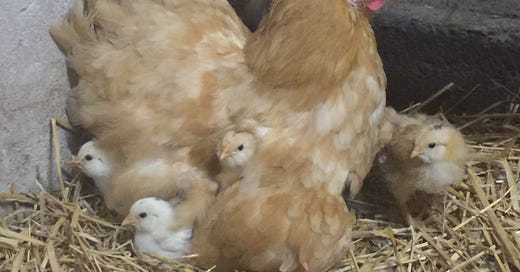When we moved to Connecticut, we inherited a few chickens that were living in the barn. After a while, it became apparent that wasn’t working out, so I decided to build a chicken coop. This was a new experience for me. I didn't know much about raising chickens, so I did my homework and gave it my best shot. Some aspects of it worked well, but some of it had to be modified later. I learned a lot about chickens through it all.
Consequently, this PBL project on designing a chicken coop caught my attention. Chicka chicka boom boom, will there be enough room ... in my coop? is part of the ChickQuest curriculum on the Ohio Gro Next Gen website. See the complete PBL lesson plan here.
If you're a K–12 teacher looking for fresh, ready-to-use science resources that connect students with the world around them, Gro Next Gen is a must-see. Powered by the Ohio Soybean Council, this impressive platform provides a wide range of free, high-quality, agriculture-based STEM materials designed to make learning relevant, hands-on, and fun.
Whether you teach in a big city or a rural district, Gro Next Gen meets students where they are and helps them see where they could go through careers in science, agriculture, food systems, and environmental innovation. From downloadable lesson plans to engaging e-learning modules to full project-based learning units, every resource is built with classroom practicality and academic rigor in mind. Materials are aligned to standards and easily integrated into existing curriculum, especially in life science, earth science, and engineering.
One standout example is the delightful and deeply educational ChickQuest project. Designed especially for grades 3–5, ChickQuest invites students to investigate the life cycle of a chicken by hatching real eggs in the classroom. But this isn’t just a cute activity. It’s a rich scientific journey into life science, data collection, environmental systems, and responsibility. Students keep journals, conduct experiments, and collaborate as young scientists.
ChickQuest supports multiple NGSS performance expectations, including:
3-LS1-1 – Develop models to describe that organisms have unique life cycles.
3-LS3-2 – Use evidence to support the explanation that traits can be influenced by the environment.
3-5-ETS1-1 – Define a simple design problem reflecting a need or a want that includes specified criteria.
Best of all, the program goes beyond just content. It supports teacher professional development, offers grant opportunities for classroom gardens and ag-based learning experiences, and builds industry connections that help students see the possibilities that await them.
For any K–12 teacher seeking to enrich science instruction and open new doors for students, Gro Next Gen is a goldmine waiting to be explored.



